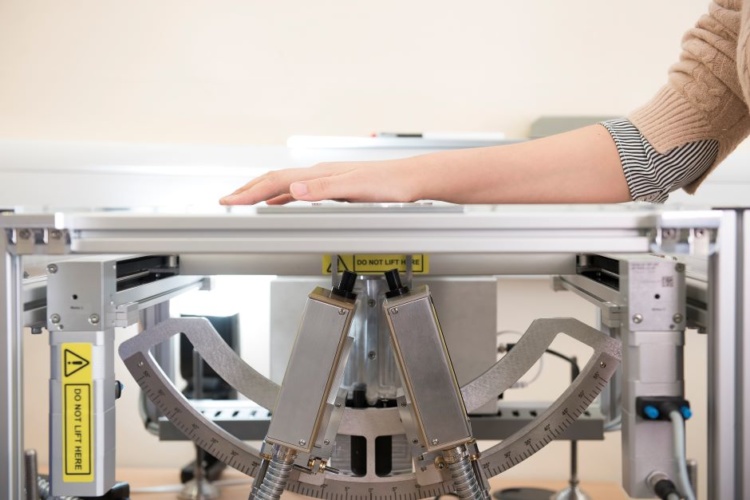
This is the claim of scientists from Warwick University and The Chinese University of Hong Kong (CUHK) who have built a more detailed picture of the skin’s structure and hydration levels by analysing T-rays fired from several different angles.
Warwick leads breakthrough in terahertz imaging
Their method, detailed in Advanced Photonics Research, could provide a new tool for scientists and clinicians for characterising the properties of skin in individuals.
Sitting between infrared and WiFi on the electromagnetic spectrum, T-rays (Terahertz (THz)) radiation sees through plastics, ceramics and clothes. They are non-ionising also, so safe for use in biological settings.
Only the T-rays passing through the outer layers of skin (stratum corneum and epidermis) before being reflected back can be detected, making T-ray imaging a potentially effective way of monitoring these outermost layers. The University said that to test this, terahertz light is focused onto the skin via a prism to align the ray in a particular focal plane. Depending on the properties of the skin, that light will be reflected back slightly differently. Scientists can then compare the properties of the light before and after it enters the skin.
Limitations in standard THz reflection spectroscopy were overcome by using ellipsometry, which involves focusing T-rays at multiple angles on the same area of skin.
By using ellipsometry they could accurately calculate the refractive index of skin measured in two directions at right angles to each other. The difference between these refractive indices is termed birefringence and the research marks the first time that the THz birefringence of human skin has been measured in vivo.
Professor Emma Pickwell-MacPherson, from the Department of Physics at Warwick University and the Department of Electronic Engineering at CUHK, said: “We wanted to show that we could do in-vivo ellipsometry measurements in human skin and calculate the properties of skin accurately. In ordinary terahertz reflection imaging, you have thickness and refractive index combined as one parameter. By taking measurements at multiple angles you can separate the two.
“Hydrated skin will have a different refractive index from dehydrated skin. For people with skin disorders, we’ll be able to probe the hydration of their skin quantitatively, more so than existing techniques. If you’re trying to improve skincare products for people with conditions like eczema or psoriasis, we would be potentially be able to make quantitative assessments of how the skin is improving with different products or to differentiate types of skin.
“For skin cancer patients, you could also use THz imaging to probe the skin before surgery is started, to get a better idea of how far a tumour has spread. Skin cancer affects the properties of the skin and some of those are unseen as they’re beneath the surface.”
To test their method, volunteers placed their arm on the imaging window of their T-ray equipment for 30 minutes, after acclimatising to the ambient temperature and dryness of the laboratory. By holding their skin against the surface of the imaging window, they blocked water from escaping from their skin as perspiration, a process called occlusion.
The researchers then made four measurements at right angles to each other every two minutes over half an hour, so they could monitor the effect of occlusion. Because T-rays are particularly sensitive to water, they could see a noticeable difference as water accumulated in the skin, suggesting that the method could show how effective a product is at keeping skin hydrated.
Further research will look at improving the instrumentation of the process and how it might work as a practical device.




Nanogenerator consumes CO2 to generate electricity
Whoopee, they've solved how to keep a light on but not a lot else.